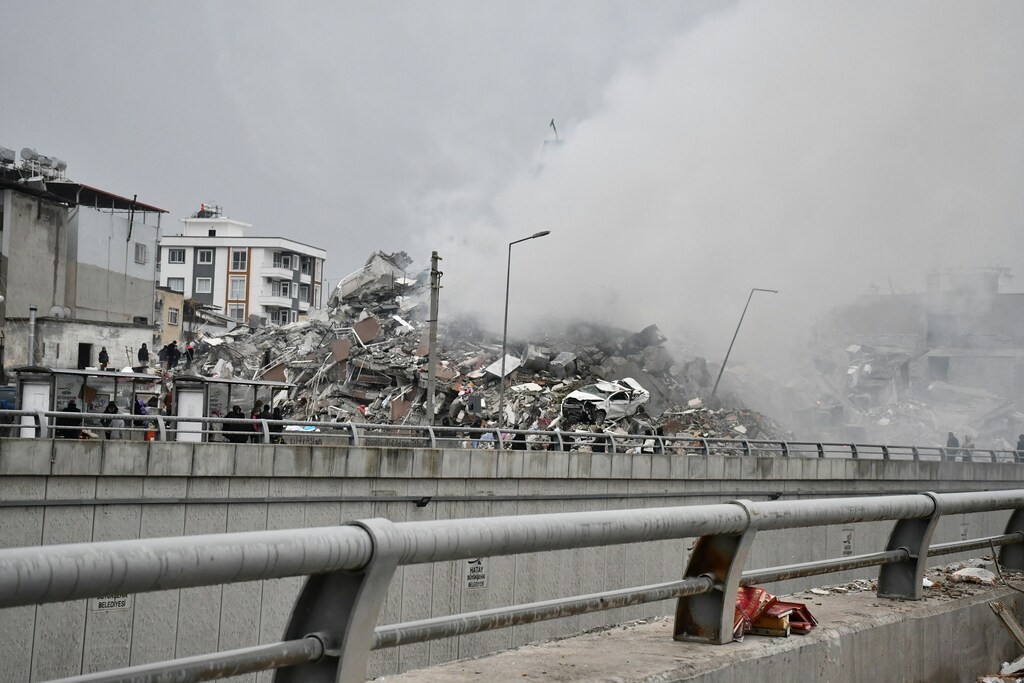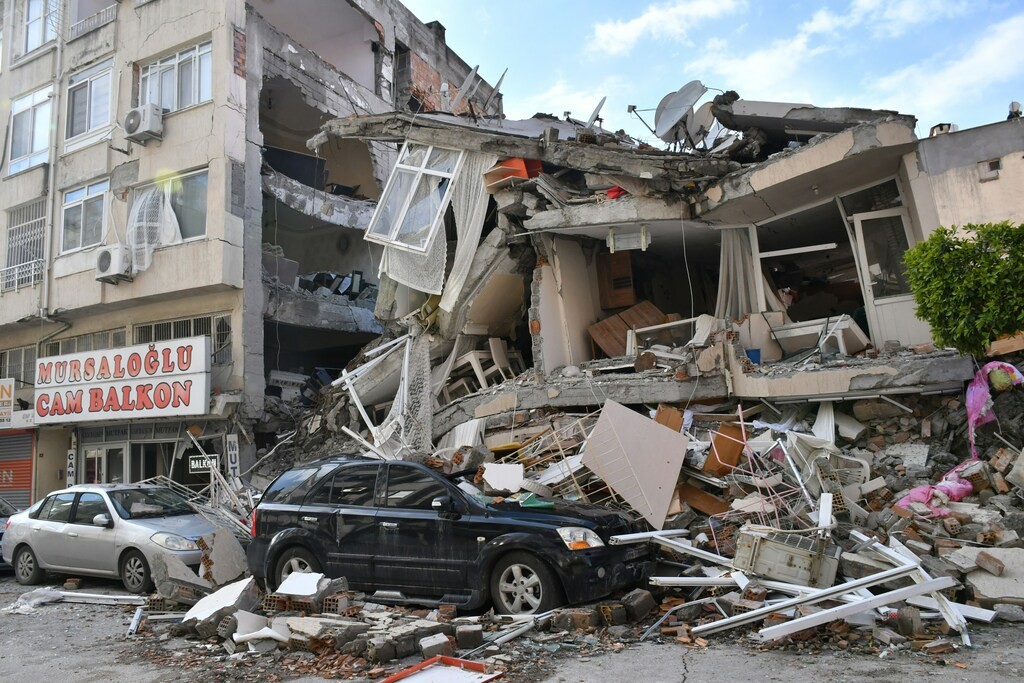In recent years, there has been a significant advancement in the field of Artificial Intelligence (AI) and Augmented Reality (AR). These technologies have become increasingly popular and have the potential to enhance virtual experiences in various fields such as gaming, education, healthcare, and...
AI Forecasts Earthquakes a Week in Advance

In recent years, advancements in artificial intelligence (AI) have revolutionized various industries, offering unprecedented capabilities and insights. One of the most groundbreaking applications of AI is its emerging role in natural disaster prediction. Scientists and researchers are now leveraging sophisticated AI algorithms to predict earthquakes with remarkable accuracy up to a week in advance.
The ability to forecast earthquakes has long been a coveted goal for seismologists, who have struggled with the inherent unpredictability of seismic activities. Traditional methods, relying on historical data and geological assessments, have often fallen short in providing timely and accurate predictions. However, the advent of AI is transforming this field, enabling more precise forecasts and potentially saving countless lives and resources.
By analyzing vast amounts of seismic data, AI systems can identify subtle patterns and anomalies that precede an earthquake. These systems utilize machine learning techniques to continuously improve their predictive models, learning from each new tremor and refining their accuracy. The result is a predictive tool that can offer warnings several days before an earthquake strikes, allowing for better preparedness and mitigation efforts.
This breakthrough in earthquake prediction represents a significant leap forward in our ability to understand and respond to natural disasters. As AI technology continues to evolve, its applications in seismology promise to become even more refined, offering hope for communities in earthquake-prone regions and paving the way for a future where natural disasters can be anticipated and managed more effectively.
Artificial Intelligence Predicts Earthquakes: Breakthrough
In a groundbreaking development, artificial intelligence (AI) technology has reached a new milestone in earthquake prediction. Scientists have created sophisticated algorithms that can accurately forecast seismic events up to a week before they occur. This advancement holds the potential to revolutionize disaster preparedness and response strategies worldwide.
The traditional methods of earthquake prediction have relied heavily on historical data and the monitoring of geological activity. However, these methods have often fallen short in providing timely and accurate warnings. The integration of AI into seismology introduces a new era of predictive analytics, utilizing vast amounts of data and advanced machine learning techniques to detect patterns that were previously indiscernible.
At the core of this breakthrough is a deep learning model trained on a comprehensive dataset that includes seismic records, geological information, and environmental factors. By processing this data, the AI system can identify subtle changes and anomalies that precede an earthquake. The table below outlines the key components and capabilities of this AI system:
| Component | Description |
|---|---|
| Data Collection | Compilation of seismic records, geological data, and environmental metrics from various sources. |
| Data Processing | Utilization of advanced algorithms to analyze and filter relevant data points for accurate predictions. |
| Pattern Recognition | Identification of patterns and anomalies that signal potential seismic activity. |
| Prediction Model | Deep learning framework trained to forecast earthquakes based on identified patterns and historical data. |
| Alert System | Automated notification system to warn authorities and the public of impending seismic events. |
This AI-driven approach not only enhances the accuracy of earthquake predictions but also significantly reduces the lead time for alerts. By providing up to a week's notice, authorities can implement emergency measures, and communities can prepare more effectively, potentially saving countless lives and reducing economic impact.
Despite its promising capabilities, the AI system is not without challenges. Continuous refinement and validation of the model are necessary to ensure its reliability and accuracy. Moreover, the integration of AI predictions with existing emergency response frameworks requires careful planning and coordination.
In conclusion, the advent of AI in earthquake prediction marks a transformative step in our ability to anticipate and mitigate the devastating effects of natural disasters. As technology advances, the potential for AI to save lives and safeguard communities becomes increasingly tangible, heralding a new era in disaster management.
Revolutionary Technology: Early Earthquake Detection
The development of artificial intelligence (AI) has introduced unprecedented capabilities in various fields, including the prediction of natural disasters. One of the most significant breakthroughs is the early detection of earthquakes, a feat that has long eluded scientists and researchers. Recent advancements in AI have enabled the prediction of earthquakes up to a week before they occur, providing a critical window for preparation and response.
Traditional earthquake prediction methods relied heavily on historical data and geological observations, which often failed to provide accurate forecasts. In contrast, AI leverages vast amounts of data from multiple sources, including seismic activity records, satellite imagery, and geophysical measurements. Machine learning algorithms analyze these datasets to identify patterns and signals indicative of an impending earthquake.
The table below outlines the key components and benefits of this revolutionary technology:
| Component | Description | Benefit |
|---|---|---|
| Data Integration | Combines data from seismic sensors, GPS, satellite imagery, and historical records. | Improves accuracy and reliability of predictions. |
| Machine Learning Algorithms | Advanced algorithms analyze patterns and detect anomalies in data. | Enables early and precise detection of seismic activity. |
| Real-time Monitoring | Continuous monitoring of seismic activity and other relevant data. | Provides timely alerts and updates. |
| Predictive Models | AI models simulate potential earthquake scenarios based on detected signals. | Helps in risk assessment and preparedness planning. |
The implementation of AI in earthquake prediction is not just about forecasting the event itself but also about understanding the underlying processes that lead to such natural disasters. By analyzing complex data sets, AI can identify subtle changes in the Earth's crust that might go unnoticed by traditional methods.
This revolutionary technology holds immense promise for mitigating the impact of earthquakes. Early detection allows for timely evacuations, better resource allocation, and overall improved disaster response strategies. As AI continues to evolve, its role in earthquake prediction and other areas of disaster management is expected to become even more pivotal, ultimately saving lives and reducing economic losses.

How AI Analyzes Seismic Data for Accuracy
Artificial Intelligence (AI) has revolutionized the way we analyze seismic data, offering unprecedented accuracy and predictive power. To understand how AI achieves this, it is essential to delve into the methodologies and processes it employs. The process typically involves several key steps, each contributing to the overall precision of the predictions.
First, AI systems collect vast amounts of seismic data from various sources, including seismographs, satellite imagery, and historical earthquake records. This data is then preprocessed to remove noise and irrelevant information, ensuring that the AI algorithms work with clean and relevant datasets.
Next, the preprocessed data is fed into machine learning models. These models, often based on deep learning techniques, are trained to recognize patterns and anomalies associated with seismic activity. The training process involves using labeled datasets, where past earthquake events are marked, allowing the AI to learn the characteristics of seismic precursors.
The AI analyzes multiple features of the seismic data, such as ground vibrations, wave propagation speeds, and frequency spectra. By examining these features, the AI can identify subtle changes that may indicate an impending earthquake. The table below highlights some of the key features analyzed by AI systems:
| Feature | Description |
|---|---|
| Ground Vibrations | Measures the intensity and direction of seismic waves. |
| Wave Propagation Speeds | Analyzes the speed at which seismic waves travel through different layers of the Earth. |
| Frequency Spectra | Examines the frequency content of seismic signals to detect anomalies. |
| Historical Patterns | Uses past earthquake data to identify recurring patterns and trends. |
| Geospatial Data | Incorporates satellite and geographical data to understand regional seismicity. |
Once the AI model is trained and validated, it can be deployed to monitor real-time seismic data. By continuously analyzing incoming data, the AI can provide early warnings and predictions of potential earthquakes. The system can also adapt and improve over time, learning from new data and refining its predictions.
The accuracy of AI in predicting earthquakes is further enhanced by integrating it with other technologies, such as Internet of Things (IoT) devices and cloud computing. IoT sensors placed in strategic locations can provide real-time data, while cloud computing allows for the processing of large datasets at high speeds. This synergy ensures that AI systems remain robust and responsive, capable of providing timely and accurate earthquake predictions.
In summary, AI analyzes seismic data through a systematic approach involving data collection, preprocessing, feature analysis, and continuous learning. By leveraging advanced machine learning techniques and integrating with modern technologies, AI offers a powerful tool for accurate earthquake prediction, potentially saving lives and reducing damage from these natural disasters.
Impacts of Early Earthquake Predictions on Society
The ability of artificial intelligence to predict earthquakes up to a week in advance could have profound effects on society. Early warnings provide critical time to prepare, potentially saving countless lives and reducing the economic impact of these natural disasters.
One of the most significant impacts is on public safety. With advanced notice, emergency services can be mobilized more effectively, and evacuation plans can be implemented with greater precision. Schools, hospitals, and other critical infrastructure can be secured or evacuated, minimizing casualties and injuries. The psychological benefits of having a plan and time to act cannot be underestimated, as they help to reduce panic and chaos.
Economically, early predictions allow businesses and industries to safeguard their operations. Factories can shut down machinery, secure hazardous materials, and protect valuable assets, thereby reducing the risk of fires, spills, and other secondary disasters. The construction industry can also benefit by halting work in high-risk areas, protecting both workers and ongoing projects from damage.
Moreover, the agricultural sector stands to gain as well. Farmers can take steps to protect livestock and crops, mitigating losses that would otherwise devastate their livelihoods. Similarly, supply chains can be adjusted to prevent disruptions in the delivery of essential goods and services.
Another critical aspect is the potential to strengthen community resilience. Early predictions foster a culture of preparedness, encouraging communities to engage in regular disaster readiness drills and to invest in resilient infrastructure. This proactive approach not only reduces the immediate impact of earthquakes but also accelerates recovery efforts, enabling affected areas to return to normalcy more quickly.
However, the benefits of early earthquake predictions also pose challenges. Ensuring accurate and reliable forecasts is paramount to avoid false alarms, which could lead to unnecessary evacuations and a loss of public trust. Additionally, equitable access to prediction technology and resources must be considered to prevent disparities between different regions and communities.
In conclusion, the advent of AI-driven earthquake predictions holds transformative potential for society. By providing advance notice, it empowers individuals, businesses, and governments to take preemptive action, ultimately enhancing safety, economic stability, and community resilience. As this technology continues to evolve, its integration into our disaster preparedness strategies will be crucial in mitigating the impact of one of nature's most formidable forces.



